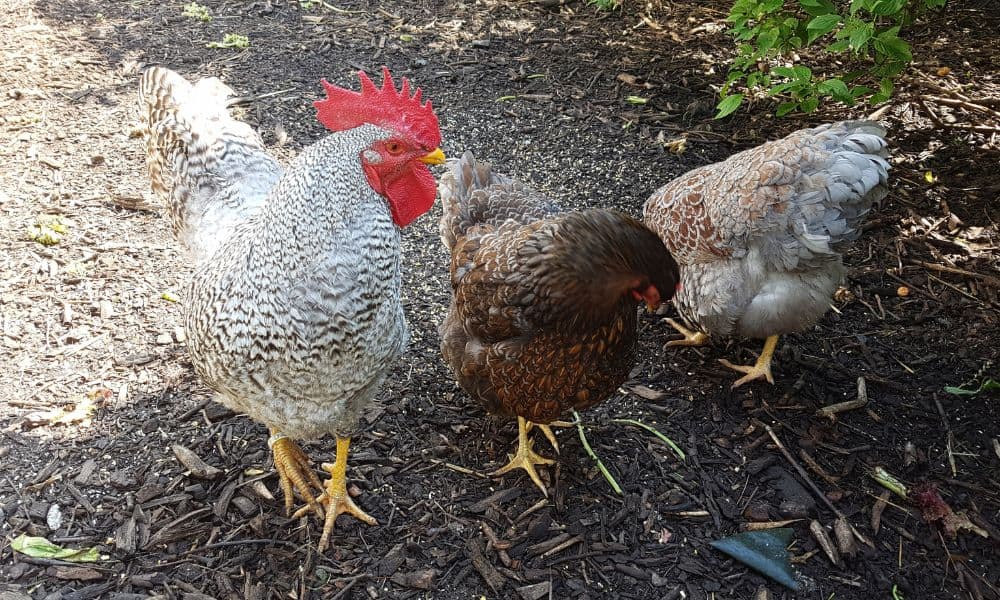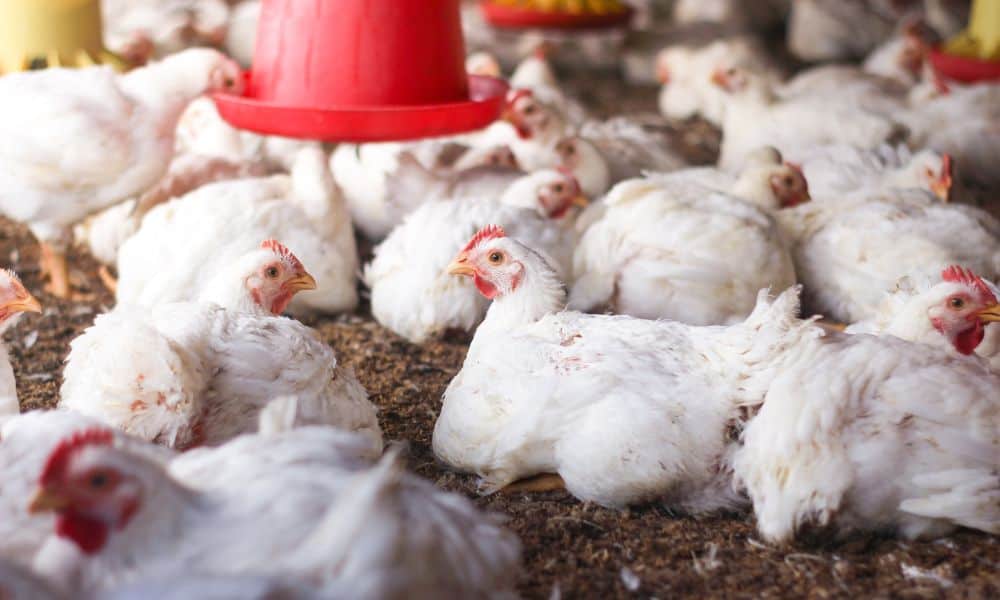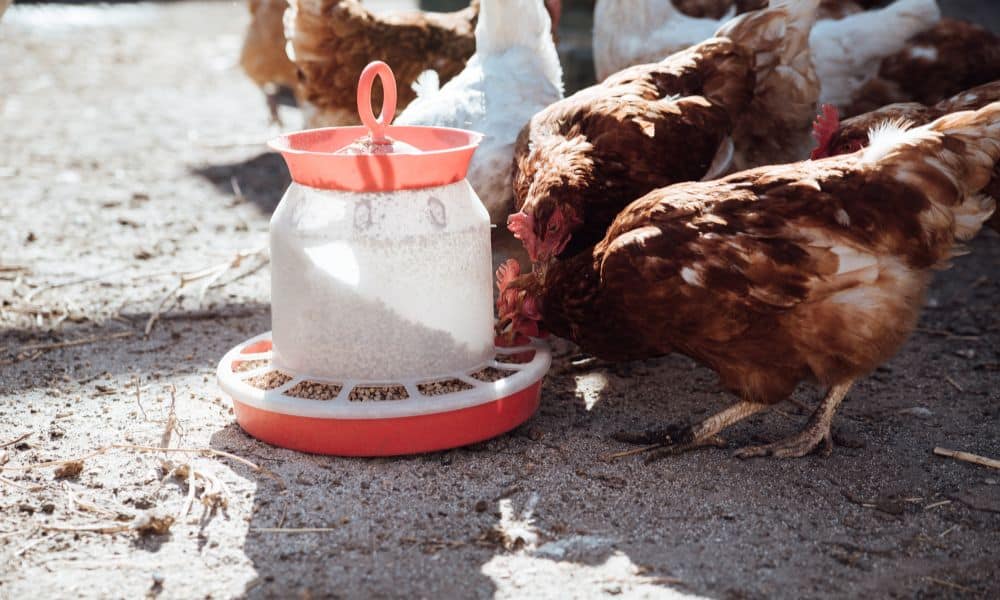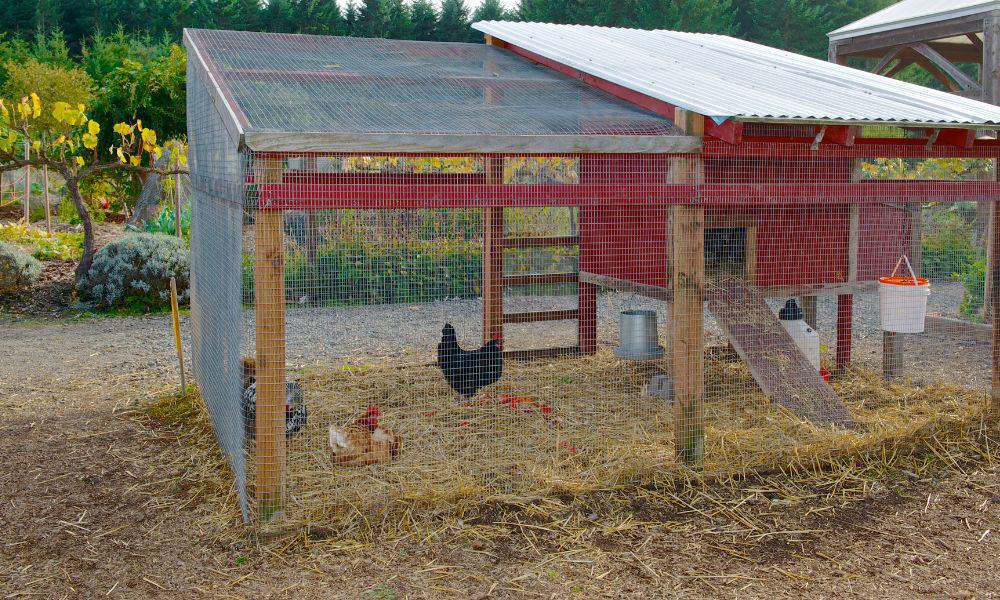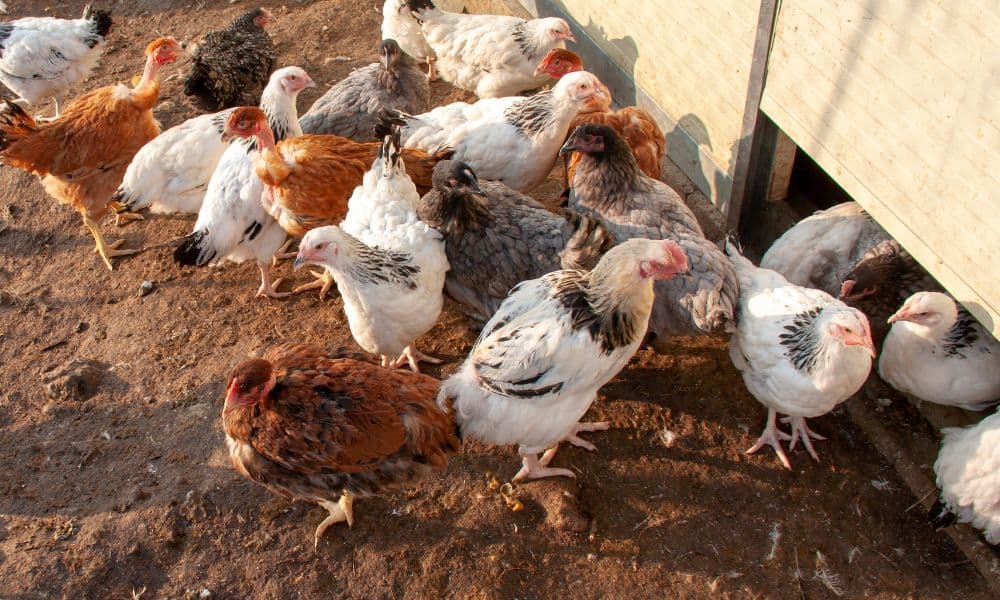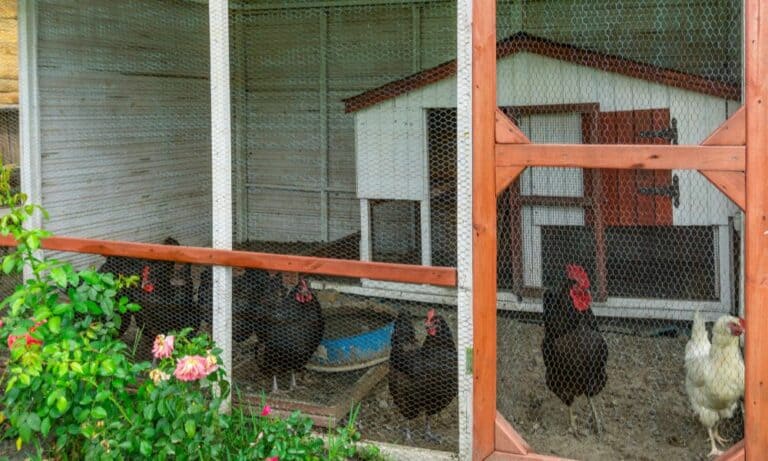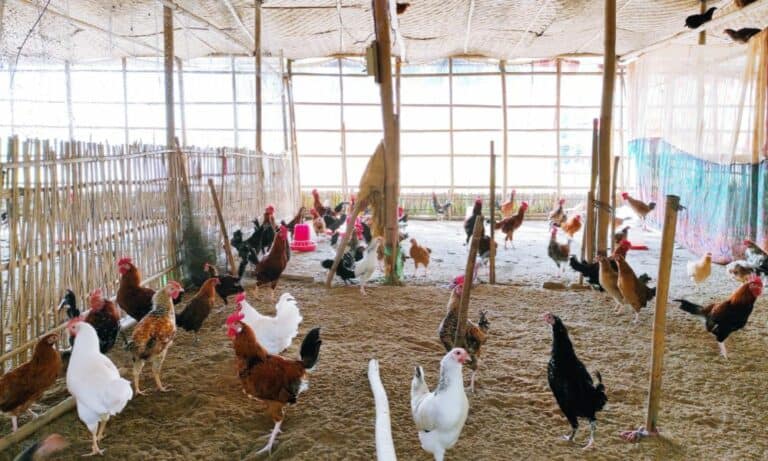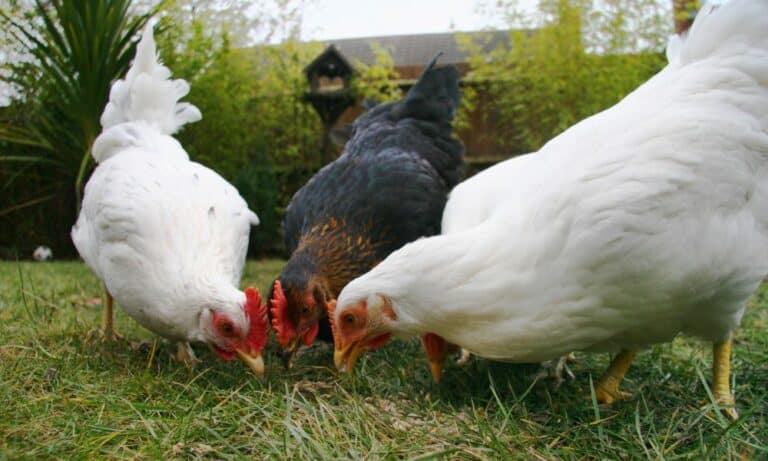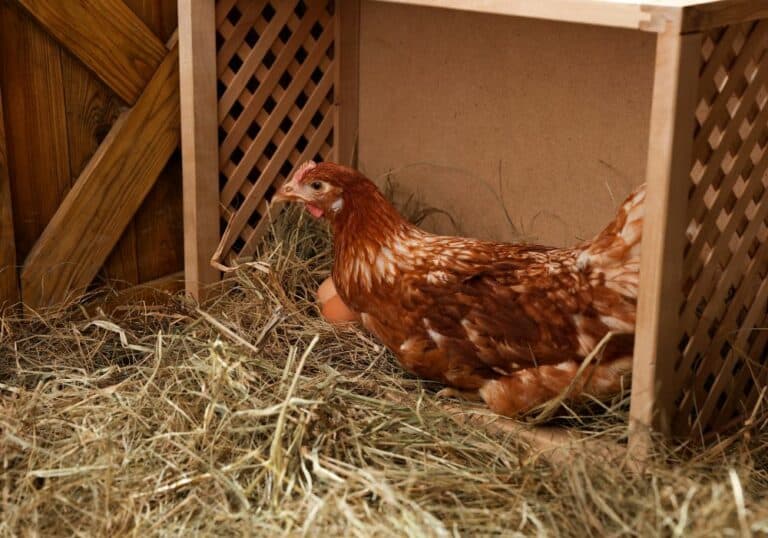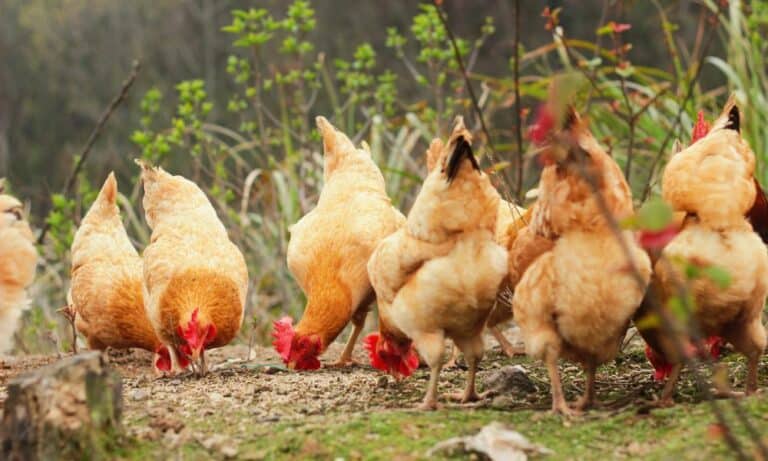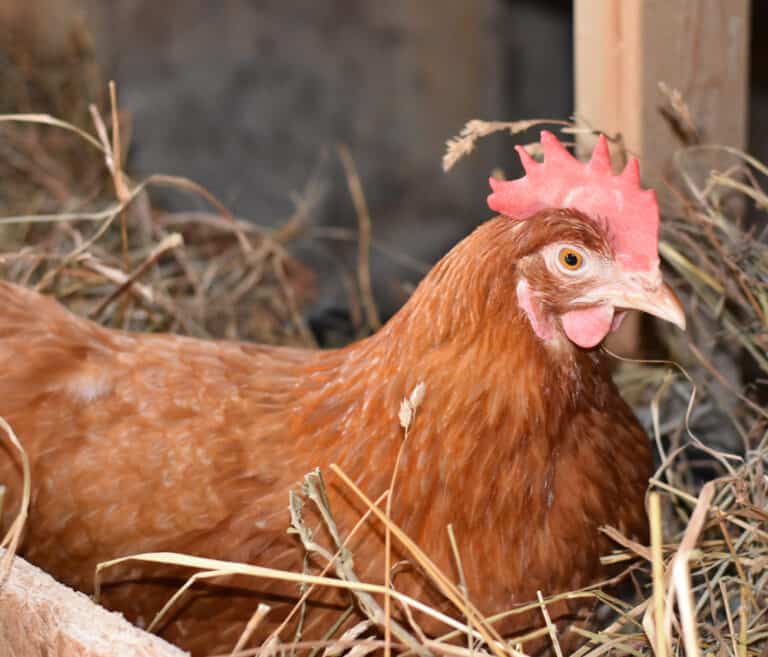Some questions seem obvious, but that’s not always the case. For example, how long is a piece of string? It sounds simple to the point of silliness, but then again, it depends on so many things! Similarly, how much do chickens weigh? Well, on average, a chicken weighs 5.7 lbs. But so many factors influence the answer. Let’s review some of the most relevant criteria.
How Age Affects Chicken Weight

People keep chicken for three main reasons – meat, eggs, or companionship. Sometimes, it’s a combination of the three, so your pet chickens might give you fresh eggs for breakfast every day. As hens get older, their egg production slows down, so they might lay on alternate days, then once or twice a week. Hens eventually stop laying when they reach four to six years old.
Chickens live between 8 and 12 years, so when hens get too old to lay eggs, you might retire them for a year or two then eventually have them for dinner. Meanwhile, most roosters stay fertile until they’re 5 or 6 years old, though some can still be baby-daddies at age 10 or 11. But younger roosters may fight them and prevent them from mating with hens, so that’s a thing.
Day-old chicks weigh 38g to 40g. That’s less than a pound, about 1.3oz. On average, hens (females that are ready to lay eggs) reach their reproductive age at 18 to 20 weeks. At that age, if they’re on a healthy diet, they weigh 4lb to 6lb and it’s usually their heaviest. As for reproductive males (roosters), they start mating at 16 to 20 weeks when they’re 6lb to 8lb.
How Sex Affects Chicken Weight
For most chicks, it’s hard to tell their sex when they’re little. In auto-sexed chicken breeds, the males and females are different colors so you can recognize them instantly. For other breeds, you need to either squeeze the chick to check its vent or inspect its feathers. When you vent the chick, you’re looking for a small bump inside the cloaca. It’s a sort of false penis.
And for the feathering method, you’re counting the rows of feathers. Males only have a primary row while females have two rows of different lengths. This option works best in chicks that are one or two days old. If you buy day-old chicks that have already been sexed, you’ll spend more, with female chicks being the most expensive. Mixed batches of chicks are way cheaper.
These co-ed chicks are called straight runs, so you have to sex them at home and tag them as needed. It’s important because once they reach their reproductive age, eggs that are fertilized can hatch in 21 days, so if you want to cook them, you have to collect them before they start maturing. Adult male hens (6lb to 8lb) are typically heavier than mature females (4lb to 6lb).
How Class Affects Chicken Weight
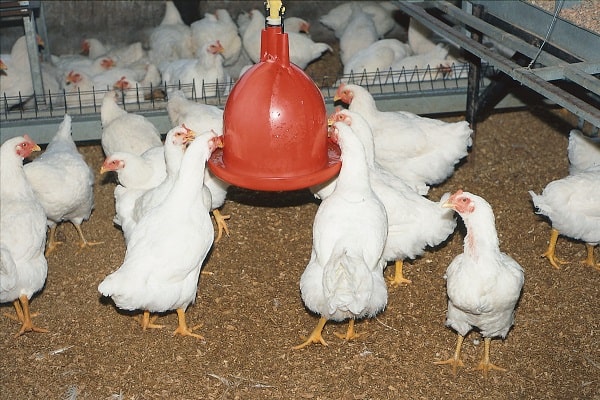
A young female chicken that hasn’t started laying eggs yet is called a pullet while a young male chicken is called a cockerel. Once they reach reproductive age, the female is known as a hen and the male is a rooster or a cock. Hens lay eggs every 24 to 26 hours even if they don’t mate. The difference is when she mates, her eggs are fertilized so they can hatch into chicks.
But if the eggs are infertile, they’ll never hatch even if she sits on them for weeks. Curiously, even if she mates, not all her eggs get fertilized. Usually, the sperm sits in her glands and can survive there for several weeks. When the first egg squeezes past them, the sperm are pushed upwards to fertilize eggs that are laid later. Hens are kept for eggs and roosters are for chicks.
But hens can be kept for meat as well. Industrial meat chickens – both male and female – are classified by fat levels and softness. Broilers or fryers are slaughtered at 3lb to 5 lb (4 to 8 weeks) while roasters are sold at 6lb to 8lb (8 to 12 weeks). Capons are neutered, fattened males that can reach 6lb to 10lb at 4 to 6 weeks. Layers start laying at about 6lb (20 weeks).
How Breed Affects Chicken Weight
Today’s chickens are much larger than their wild ancestors because we deliberately crossbred them. We were trying to make them gentler and more productive, so some were tailored to lay more eggs while others were bred to grow larger and give more meat. Breeds that are good layers often have smaller bodies, so even their males are inefficient as meat producers.
Other breeds are dual, so they have dense, fleshy bodies but can still lay eggs every day. They convert feed to meat effectively so they’re more profitable. On the other hand, some chickens were bred as bantams aka miniature chickens, so even as adults, they don’t get big. And show chickens are mainly ornamental so they have gorgeous feathers but egg volumes remain low.
These show chickens don’t have much meat either since their energy goes towards making pretty feathers. The largest chicken breed is the Jersey Giant, which weighs about 13lb at 16 to 20 weeks. And the smallest chicken breed is the Malaysia Serama Bantam, which barely weighs 2lb at full size. Notably, some breeds have both standard-sized and bantam variants.
How Fertility Affects Chicken Weight
We’ve already talked about pullets, hens, cockerels, cocks, roosters, bantams, and capons. So let’s dig a little deeper into this. We’ve mentioned that meat chickens – broilers/fryers and roasters – can be either male or female. But these chickens are slaughtered while they’re still pretty young. This is because they haven’t reached reproductive age yet so the meat is softer.
These young chickens leave their coops and reach your table before they’re 3 months old, and as we said, broilers or fryers are 3lb to 5lb while roasters are 6lb to 8lb. These birds are fertile but juvenile, not yet their full size. Capons are cockerels that have been neutered or castrated. This means their bodies focus on bulking up. By 4 months, they’re quite heavy.
Capons are often sold as a substitute for turkeys and can weigh 6lb to 10lb at 4 to 6 weeks. As for older hens and roosters that have stopped mating or laying, their meat is much tougher. Since they’re not ideal for frying or roasting, they’re sold for soups and stews that can slowly cook or simmer without ruining the texture or flavor of the dish. They’re usually over 6lb.
How Diet Affects Chicken Weight
Industrial chickens are often housed indoors and eat pellets or commercial chicken feed. The food has customized nutrients based on the class of the chickens e.g. supplements for richer eggs in layers or protein for denser flesh in broilers. Ideally, you want large-scale chickens to grow faster so you can maximize your profits. You might even opt for early maturing breeds.
For example, Cornish chickens can reach 12lb in 8 weeks while Egyptian Fayoumis can start laying eggs at 16 weeks! That said, some people prefer to keep free-range chickens that roam and forage for their own food. This gives them a varied diet including grass, weeds, and bugs. You can still supplement their diet with commercial chicken feed when they’re back indoors.
Free-range chickens often sleep inside their coops and stay outside during the day. Their eggs and flesh may be more nutritious because of their varied diet, but it may also be desirably tougher because they get adequate exercise. On the other hand, overfed under-stimulated chickens can get obese. Their meat gets unpleasantly fatty and their eggs are tastelessly flat.
How Housing Affects Chicken Weight
We’ve just talked about free-range chickens. They get to wander around the yard during the day and only come indoors to sleep or lay eggs. Their meat isn’t as soft as indoor chickens, but some people prefer it that way, which is why they specifically shop for free-range birds. Some are even allowed to sleep outdoors if their neighborhood has no wild predators.
On the other hand, chickens in factory farms are sometimes squashed and overcrowded. The target is to maximize profitability, so these farmers don’t dwell on the physical comfort of their livestock. These birds will sometimes live in dark coops without natural light and no room to walk around. They get fatter quicker but may have atrophied legs, bones, and wings.
These chickens will be heavier, yes, but they’re also more susceptible to diseases, so they may have more chemicals to keep them pest-free. And the texture of the meat differs too because the bird’s circulation is constrained. You can’t always tell when you buy the meat, but once it gets to your plate, the taste and texture are substandard, camouflaged with spices or grease.
How Environmental Factors Affect Chicken Weight
People who keep pet chickens will tell you their birds have personalities. They may not be seen as sentient, but they do have distinctive characters. This is important because it means chickens are capable of being stressed. How much do chickens weigh when they’re unhappy? A bullied chicken might be stopped from accessing food, so it may get undesirably skinny.
Chickens that have no protection from harsh weather conditions or predators may be too hot, cold, or scared to enjoy their food so they may huddle and hide. Frustrated chickens may peck at each other or even eat their own eggs, and that can affect their body mass. Chickens that are bored, listless, or threatened may feel stunted and miserable so they’ll stop growing.
It’s important to routinely inspect your chicken surroundings and keep them optimal. Clean the coop regularly to avoid pests and infections. Provide toys, perches, dust baths, and other forms of stimulation. Spot any aggressive individuals and give them a separate living area. Ensure that your chickens have enough space to rest, run, and get privacy when they need it.
The Benefit of Bantam Roosters
A bantam rooster is smaller so he eats less but he can still mount the hens. Also, because he’s lighter, he’s less likely to hurt the hens while mating, and may even be less aggressive. This is why some people deliberately use bantams when they want chicks from their pet chickens. Do you know any other things that could affect a chicken’s weight? Tell us in the comments!

